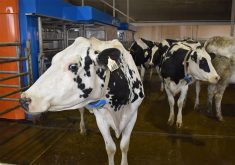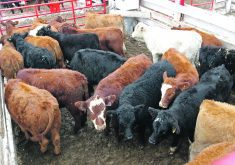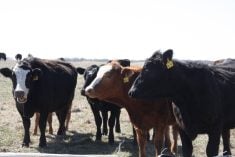This cattle market information is selected from the weekly report from Canfax, a division of the Canadian Cattlemen’s Association. More market information, analysis and statistics are available by becoming a Canfax subscriber by calling 403-275-5110 or at www.canfax.ca.
Fed cattle stabilize
Alberta direct cattle sale last week saw weighted average steer prices rise $4 per hundredweight.
The week’s reported trade was exclusively on the rail ranging from $246-$252 delivered.
Most of the trade was at about $250, or $4-$6 higher than the previous week.
Read Also

U.S. government investigates high input costs
The USDA and DOJ are investigating high input costs, but nothing is happening in Canada.
More heifers were on offer.
The weekly Alberta cash-to-futures basis firmed seasonally to +$3.12.
Weekly western Canada slaughter to July 2 rose to 33,327 head even with the July 1 holiday.
Weekly exports to June 25 rebounded to 4,001 head.
Cattle futures bounced around during the week.
Market-ready supplies will increase as they normally do this time of year but should remain manageable, leading to fairly steady prices.
U.S. feeders sold cattle aggressively in recent weeks, so there is less chance of them backing up later. However, we are heading into the dog days of summer when beef demand slackens.
The U.S. cash live trade at the end of the week was at US$119-$120 per cwt., steady to down $2 from the previous week.
Cows strengthen
D1, D2 cows ranged C$87-$100 to average $93.63, up $3.10.
D3s ranged $78-$90 to average $83.90 per cwt.
Rail grade cows were $180-$185.
Alberta and Ontario cow prices have moved in opposite directions lately. Ontario cows have traded within $4.50 of annual highs set in January.
Alberta D1, D2 cow prices have eased $13 per cwt. since the middle of June. It’s the first time since September 2015 that prices have been at a discount to the U.S. utility market.
Competition for non-fed cattle has been limited with one Alberta plant temporarily off the market.
Non-fed prices are anticipated to see a modest increase heading into late July-early August.
Feeder market weak
The feeder market saw one of the smallest auction volumes this year.
There were 5,600 head at auction, down from 14,800 last year at the same time when dry conditions forced cattle off grass much earlier than normal.
As well, strong prices delivered great profits last year, encouraging sales.
Profits this year are a lot lower. Few yearlings on grass are forward contracted because there has been limited pricing opportunity.
Producers will retain ownership as long as grazing conditions are favourable, hoping for a rally in the Chicago deferred live cattle contracts.
Feeder exports this year are down 37 percent at 137,437 head.
Buyers from Eastern Canada were more active with good interest on steers and heifers coming off grass for immediate delivery.
Dry lot fed cattle are being priced competitively with cattle coming off grass.
In light trade, central Alberta steers based at 550 pounds for October delivery traded at $200 per cwt.
Beef stronger
Choice cut-out value as of July 7 was US$210.05, up $1.61 per cwt., and Select was up $1.97 at $196.98.
Beef was supported by higher fed cattle prices, reduced slaughter in the holiday-shortened week and buyers restocking after the long weekend.
Weekly Canadian cut-out values to June 24 fell with AAA down C$8.94 at $281.73 per cwt. and AA down $2.58 at $255.73.
Middle meats were the key driver of the decline as demand for the July 1 holiday mostly finished.














